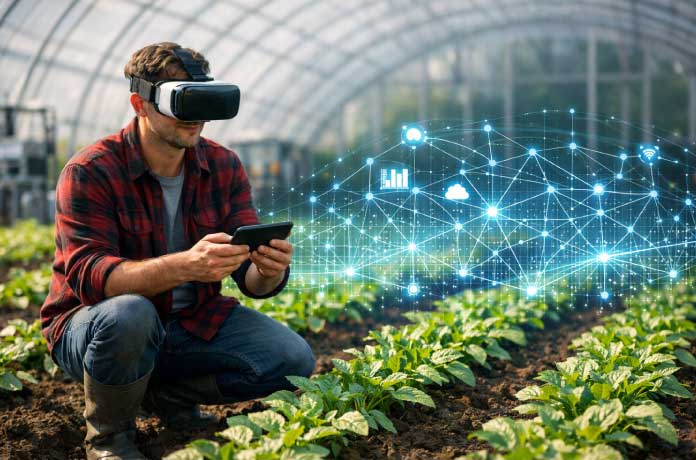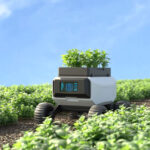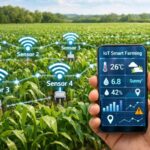Recently, agriculture has undergone a transformative journey, adopting cutting-edge technologies to enhance productivity, sustainability, and efficiency. Among these technological innovations, virtual reality (VR) and augmented reality (AR) have emerged as powerful tools for reshaping the agricultural landscape. Through immersive experiences and data visualization, VR and AR offer unprecedented opportunities to optimize various aspects of farming, from crop management to training, ultimately revolutionizing the industry.
Virtual Reality: Cultivating Knowledge
Virtual reality immerses users in computer-generated environments, providing a simulated, lifelike experience. VR in agriculture is revolutionizing how farmers learn, plan, and execute their operations.
- Training and Education: VR simulations enable farmers to undergo immersive training experiences without the constraints of time and resources. Farmers can practice and refine their skills in a safe virtual environment, from equipment operation to crop management techniques, reducing the risk of costly mistakes in the field.
- Precision Agriculture: VR technology allows farmers to visualize vast tracts of land in three dimensions, facilitating precision agriculture practices. By overlaying data such as soil composition, moisture levels, and crop health onto virtual maps, farmers can make informed decisions regarding planting, irrigation, and fertilization, optimizing resource allocation and maximizing yields.
- Remote Monitoring: With VR-enabled drones and sensors, farmers can remotely navigate their fields and inspect crops from anywhere in the world. This capability is valuable for large-scale operations, enabling farmers to identify issues such as pest infestations or disease outbreaks early on and take prompt action to mitigate them.
Augmented Reality: Enhancing Real-World Insights
Augmented reality blends virtual elements with the physical world, overlaying digital information onto the user’s view of their surroundings. In agriculture, AR enhances decision-making processes and empowers farmers with real-time insights.
- Field Navigation: AR applications equipped with GPS technology guide farmers through their fields, providing real-time navigation assistance and highlighting points of interest such as irrigation systems or crop boundaries. This streamlines field operations reduces errors, and increases overall efficiency.
- Crop Monitoring: AR-enabled smart glasses or mobile devices allow farmers to view critical crop information, such as growth stages, nutrient deficiencies, and pest infestations, overlaid onto their field of vision. Farmers can access valuable data and make informed decisions regarding treatment or harvesting schedules by looking at a plant.
- Interactive Prototyping: AR technology facilitates the design and testing of agricultural infrastructure and equipment. By overlaying virtual models onto real-world environments, engineers and designers can assess factors, including scalability, efficiency, and ergonomics, before committing to physical construction, saving time and resources.
The Future of Agricultural Innovation
As virtual and augmented reality continue to evolve, their applications in agriculture are poised to expand even further, driving innovation and sustainability across the industry.
- Data-driven Insights: VR and AR platforms generate vast amounts of data that are analyzed to gain deeper insights into agricultural processes. Machine learning algorithms can leverage this data to optimize farming practices, predict crop yields, and identify trends, empowering farmers to make data-driven decisions.
- Collaborative Solutions: VR and AR enable collaboration among stakeholders within the agricultural ecosystem, from farmers and researchers to policymakers and consumers. By sharing immersive experiences and visualizing complex datasets, stakeholders can work together to address challenges, including food security, climate change, and resource management.
- Accessible Technology: As VR and AR technology become more affordable and user-friendly, their adoption in agriculture is likely to become increasingly widespread. From smallholder farmers in developing countries to agribusinesses in industrialized nations, a diverse range of stakeholders stand to benefit from the transformative potential of immersive technologies.
In conclusion, virtual and augmented reality are revolutionizing agriculture by providing farmers with immersive experiences, real-time insights, and data-driven solutions. By leveraging these technologies, farmers can enhance productivity, sustainability, and resilience in the face of evolving challenges, ushering in a new era of innovation in agriculture.





